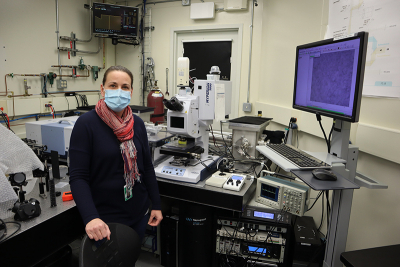
Dr Kendra Furber, Assistant Professor, UBC Northern Medical Program and the Division of Medical Sciences at the University of Northern British Columbia, is working to pinpoint the causes of brain ageing and how we can prevent or reverse the damage of time. Myelin degradation is one of the contributing factors to these lapses in memory and cognition. This fatty substance covers the neurons in your brain and spinal cord, helping to insulate the connections between cells and allowing lightning-fast information flow through the nervous system.
“Our brains continue to myelinate until midlife and then the volume and integrity of that myelin starts to decline. This often correlates with deficits in memory and cognitive processing speed”, Furber said.
Furber and her team have been using FT-IR imaging at the Mid-IR beamline of the Canadian Light Source (CLS), the University of Saskatchewan, to look at biochemical changes in the brain. Furber has focused her attention on specialised cells in the brain that form the myelin sheath. The myelin-producing cells look a little bit like an octopus with multiple “tentacles” that wrap around our neurons, providing them with the insulation they need. As they age, the “tentacles” wither, leaving cell connections unprotected. They hope to understand why the myelin starts to decline with age.
“At some point some of that myelin is lost and we get less and less efficient at repairing it”, Furber said. “It’s kind of this balance and it gets tipped to more myelin loss as we age—we’re not making those new connections or wrapping up the nerve processes as well.”
The brain likes to rewire pathways when we are learning new skills, what scientists refer to as neuroplasticity. As we age, the brain is not as flexible and rewiring pathways becomes more difficult, leading to changes in learning and memory. Furber and her team are currently looking at strategies to help make our brain cells more resilient to environmental stress. Data shows that simple things like exercise, sleep and a proper diet may help keep our myelin healthy.
“We started trying some really interesting stuff using the synchrotron light”, Furber said. “The beamline scientists are the ones that are really pushing these new methods and now I get to think up all the fun questions that we can ask that we wouldn’t be able to ask using our normal microscopes in our lab.”










